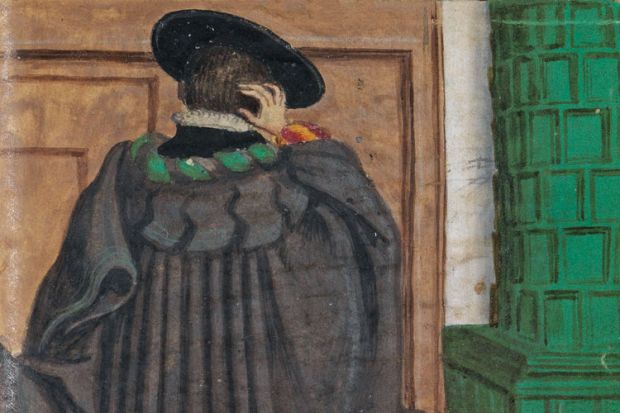“In my mind I was a badass, and very keen on horse riding when my father sent me to Munich for his business,” wrote Matthäus Schwarz on a picture of himself astride a horse in a long wool gown, a young Augsburger on the make. That was 1512 and Schwarz was 15 years old. Only eight years later, he was chief accountant to Jakob Fugger, “Fugger the Rich”, Augsburg’s (and Europe’s) most powerful businessman. Schwarz, the son of a wine-seller and the grandson of a carpenter who had been executed for his egalitarian politics, was on his way. That same year he began his “little book of clothes”, or Klaidungsbüchlein, an extraordinary book of illuminations in which he modelled his life and his garments, looking back to childhood and continuing into his sixties.
Historians Ulinka Rublack and Maria Hayward, who have beautifully reassembled the complete series of 137 colour images (plus those of Schwarz’s son, Veit), have dubbed it the first book of fashion, and it is indeed the first life told in portraits by a man obsessed with the functional aesthetics of clothing. Schwarz attests to a crucial dimension of Renaissance material culture, that juggernaut of luxury production, trade and consumption that went hand in hand with a veritable cult of self-fashioning. He tricked himself out in a staggering array of satins, damasks, taffeta, furs and armour, often accessorised with a lance, sword or bow, to express masculinity, style and aspiration. At red-carpet events he was especially bold, evidenced by the headpiece of red and white ostrich feathers that he donned in 1521 to impress visiting Habsburg royalty, and the red and yellow striped doublet and hose ensemble “to please King Ferdinand during the Imperial Diet, when Emperor Charles V was here” in 1530.
In her lucid contextualising essay, Rublack calls the latter outfit (reconstructed by designer Jenny Tiramani and discussed in an appendix) a superb example of “bourgeois power dressing” – and it must have paid off, since Schwarz was ennobled in 1541. Yet as Rublack points out, this book was more than a record of Schwarz’s sartorial drive for social mobility. He also infused his picture memoir with themes of transience and loss. After he married at 41, in what was now a less flamboyant Reformation Augsburg, his commissions were fewer and more sombre; at 50 he had a stroke and presented himself in simple house clothes, convalescing. Death itself bookended his project, most poignantly with the five-year-old Matthäus dressed in black on the day his mother died and working on his ABCs, the moment “I started to think and remember, but as in a dream”.
Indeed, in the book’s most unexpected images, Schwarz, aged 29, appears entirely nude, front and back: “This was my proper figure from behind, for I had become fat and round.” It was a dramatic reversal, possibly triggered by the death of Fugger and, as the lean, badass self-image of his youth deserted him, by a sense of his own mortality. Dress, argues Rublack, was not external; it constituted a sense of the body, of “the self in itself”. Yet for a moment at least, the clothes that Schwarz adored perhaps seemed to him no more than vain exteriors that concealed his true self, the self that would stand naked before the Father on Judgement Day.
David Rosenthal is fellow at Villa I Tatti, the Harvard Center for Italian Renaissance Studies. He is author of Kings of the Street: Power, Community and Ritual in Renaissance Florence (2015).
The First Book of Fashion: The Books of Clothes of Matthäus and Veit Konrad Schwarz of Augsburg
Edited by Ulinka Rublack and Maria Hayward
Bloomsbury, 432pp, £30.00 and £29.99
ISBN 9780857857682 and 9781474249898 (e-book)
Published 22 October 2015
Register to continue
Why register?
- Registration is free and only takes a moment
- Once registered, you can read 3 articles a month
- Sign up for our newsletter
Subscribe
Or subscribe for unlimited access to:
- Unlimited access to news, views, insights & reviews
- Digital editions
- Digital access to THE’s university and college rankings analysis
Already registered or a current subscriber?




